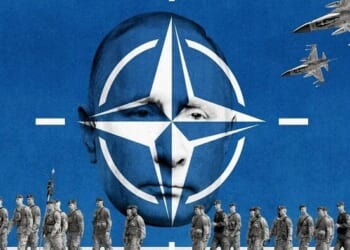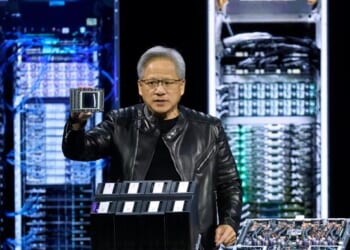Stories about killer robots, machine-augmented heroes, laser weapons and battles in space – outer or cyber – have always been good for filling cinema seats, but now they have started to liven up sober academic journals and government white papers.
However, war is about much more than combat or how we fight. Is the sensationalism of high-tech weaponry blinding us to technology’s impact on the broader social, political and cultural context that determines why, where and when war happens, what makes it more or less likely, and who wins?
Consider artificial intelligence (AI). The potential for developing lethal autonomous weapons systems grabs headlines (“killer robots!”), but the greatest impact of AI on conflict may be socially mediated. Algorithmically-driven social media connections funnel individuals into trans-national but culturally enclosed echo-chambers, radicalising their world-view.
As robots relieve humans of their jobs, some societies will prove better prepared than others in their use of education and infrastructures for transitioning workers into new, socially sustainable and economically productive ways to make a living. Less prepared nations could see increasingly stark inequality, with economically-excluded young people undermining social stability, losing faith with technocratic governance, and spurring the rise of leaders who aim popular anger at an external enemy.
Looking beyond individual technologies allows us to focus on the broader and deeper dimensions of the transformation coming our way. Professor Klaus Schwab, chairman and founder of the World Economic Forum, argues that the collapse of barriers between digital and physical, and between synthetic and organic, constitutes a Fourth Industrial Revolution, promising a level of change comparable to that brought about by steam power, electricity and computing.
Something that makes this revolution fundamentally different is how it challenges ideas about what it means to be human. For instance, neuroscience is teaching us more about our own fallibility, and also just how ‘hackable’ humans are. As science continues to uncover difficult truths about how we really operate, we will have to confront basic assumptions about the nature of human beings. Whether this deep transformation will reinforce or undermine a shared sense of human dignity, and what effects it will have on our relationship with organized violence, remain open to question.
The experience of past industrial revolutions can help us begin to search for answers about how this will transform the wider context of international security. In the first industrial revolution, deposits of coal and iron ore were one factor determining the “winners” in terms of economic and geopolitical power.
Today, new modes and artefacts of industrial production will also change demand patterns, empowering countries controlling supply and transit, and disempowering others. Progress in energy production and storage efficiency, for instance, is likely to have profound consequences for the petro economies and the security challenges of their regions. Although the set of natural resources critical to strategic industries will change, their use as a geo-economic tool will probably be repeated.
For instance, this is widely thought to have happened when, in the midst of a maritime dispute with Japan in 2010, China restricted export of “rare earths” that are critical for computing, sensors, permanent magnets and energy storage. With ever more commercial and military value embedded in the technology sector, such key materials will be deemed “critical” or “strategic” in terms of national security, and be subject to political as well as market forces.
The 19th Century Industrial Revolution showed how technological asymmetry can translate into geopolitical inequality – in the words of Hilaire Belloc’s poem ‘The modern traveller’, spoken by a European about Africa: “Whatever happens, we have got the Maxim Gun, and they have not”. (The Maxim Gun was the first recoil-operated machine gun).
What will be the Maxim Gun of our time? Who will have it, and who will not? In the 20th Century, the “haves and have-nots” of the nuclear weapons club membership became the major determinant of the post-war global order, and – as seen in the cases of Iran and North Korea today – this continues to be relevant. Stealth technology and precision guided missiles used to impose a “new world order” in the early 1990s showed how the gap in military capability separated the United States from others, sustaining its leadership of a “unipolar” order.
According to the current US deputy secretary of defence Robert Work, “There’s no question that US military technological superiority is beginning to erode”.
History can only tell us only so much. There is a need for fresh thinking about the implications of the Fourth Industrial Revolution for international security.
Strategic de-stabilisation
1. Waging war may seem “easier”. If increased reliance on machines for remote killing makes combat more abstract from our everyday experience, could that make it more tolerable for our societies, and therefore make war more likely? Those who operate lethal systems are ever more distant from the battlefield and insulated from physical danger, but this sense of advantage may prove illusory. Those on the receiving end of technological asymmetries have a stronger incentive to find other ways to strike back: when you cannot compete on a traditional battlefield, you look to where your adversary is vulnerable, such as through opportunistic attacks on civilians.
2. Speed kills. “The speed at which machines can make decisions in the far future is likely to challenge our ability to cope, demanding a new relationship between man and machine.” This was the assessment of US Major General William Hix at a conference on the future of the Army in October 2016. The speed of technological innovation also makes it hard to keep abreast of new military capabilities, easier to be misled on the actual balance of power, and to fall victim to a strategic miscalculation. The fact that some capabilities are deliberately hidden just makes it harder. Because offensive cyber capability relies so much on exploiting one-off vulnerabilities, it is difficult to simultaneously demonstrate and maintain a capability. Once a particular vulnerability has been exploited, the victim is alerted and will take steps to fix it. General Hix again: “A conventional conflict in the near future will be extremely lethal and fast, And we will not own the stopwatch.”
3. Fear and uncertainty increase risk. The expectation that asymmetries could change quickly – as may be the case with new strategic capabilities in areas like artificial intelligence, space, deep sea and cyber – could incentivise risk-taking and aggressive behaviour. If you are confident that you have a lead in a strategically-significant but highly dynamic field of technology, but you are not confident that the lead will last, you might be more tempted to use it before a rival catches up. Enhanced capacity to operate at speed puts security actors into a constant state of high alert, incentivises investment in resilience, and forces us to live with uncertainty. Under these conditions, war by mistake – either through over-confidence in your ability to win, or because of exaggerated threat perception – becomes more likely.
4. Deterrence and pre-emption. When new capabilities cause a shift in the balance between offensive and defensive advantage – or even the perception of such a shift -, it could increase the incentives for aggression. For example, one of the pillars of nuclear deterrence is the “second strike” capability, which puts the following thought into the mind of an actor contemplating a nuclear attack: “even if I destroy my opponent’s country totally, their submarines will still be around to take revenge”. But suppose swarms of undersea drones were able to track and neutralize the submarines that launch nuclear missiles? Long-range aerial drones can already navigate freely across the oceans, and will be able to fly under the radar deep into enemy territory. Such capabilities make it possible in theory for an actor to escape the fear of second-strike retaliation, and feel safer in launching a pre-emptive strike against aircraft in their hangars, ships in port, and critical infrastructure, with practically no chance of early warning. Indeed, cyberattacks on banks, power stations and government institutions have demonstrated that it is no longer necessary to fly bombers around the world to reach a distant enemy’s critical infrastructure without early warning. The idea of striking a `knockout blow` may come to seem feasible once more.
5. The new arms race is harder to control. One of the mechanisms for strategic stability is arms control agreements, which have served to limit the use of nuclear, biological and chemical weapons. When it comes to the multiple combinations of technology we see as a hallmark of the Fourth Industrial Revolution, one of the obstacles to international agreement is caused by uncertainty about how strategic benefits will be distributed. For instance, the international community is currently debating both the ethics and practicality of a ban on the development of lethal autonomous weapons systems. One of the factors holding this debate back from a conclusion is a lack of consensus among experts about whether such systems would give an advantage to the defender or the attacker, and hence be more likely to deter or incentivize the escalation of conflict. Where you stand on the issue may depend on whether you see yourself as a master of the technology, or a victim. Another obstacle to imposing control is the wider cast of players –















